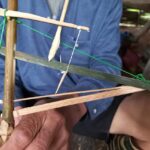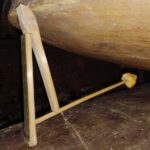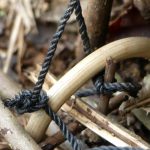Scissor traps are universal traps that can catch all kinds of small rodents. They are easy to produce from bamboo but need one item to be sourced in the villages. These are strips of bicycle tubes, which are not easy to come by in these remote areas. Therefore, deadfall traps and bow traps are more common.
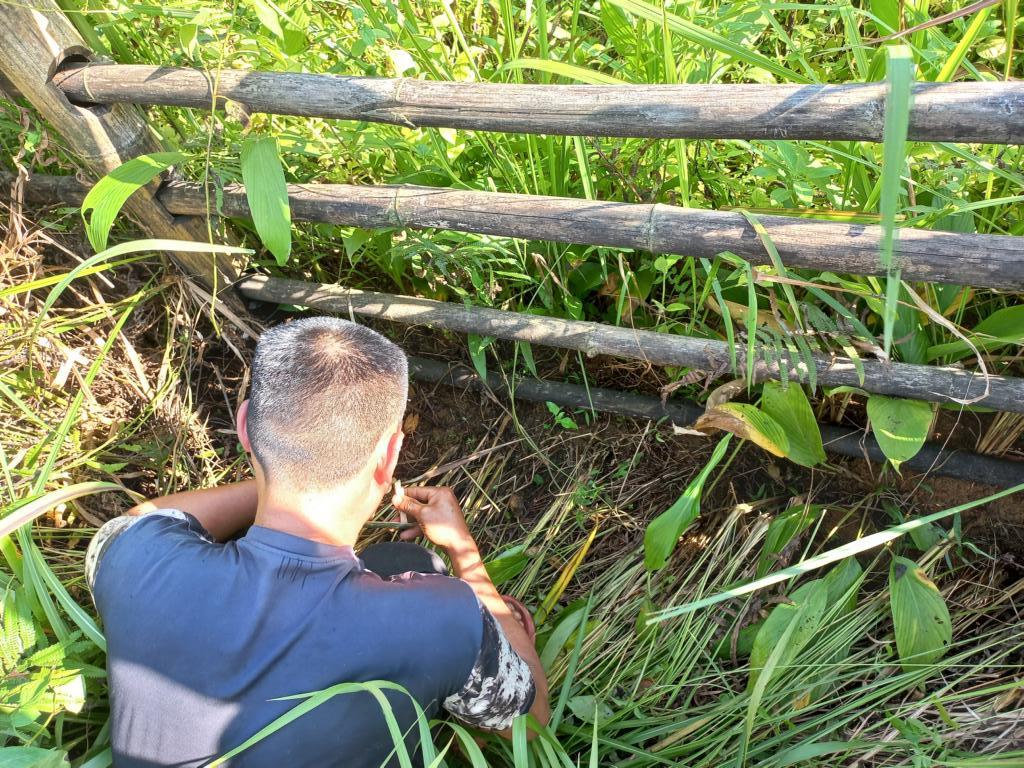
Target animals
These scissor traps are used for catching small rodents, from Sikkim rats, field rats, mice, and shrews down to the tiniest voles. Asiatic brush-tailed porcupines are common in this area and are also rodents, but they are already too big for these traps. Typical locations for setting up scissor traps are visible rodent runs leading along linear structures. Such locations will be used both by rats as well as by mice/shrews/voles. The following picture shows a combination of a used run along a linear structure of a bamboo pole.
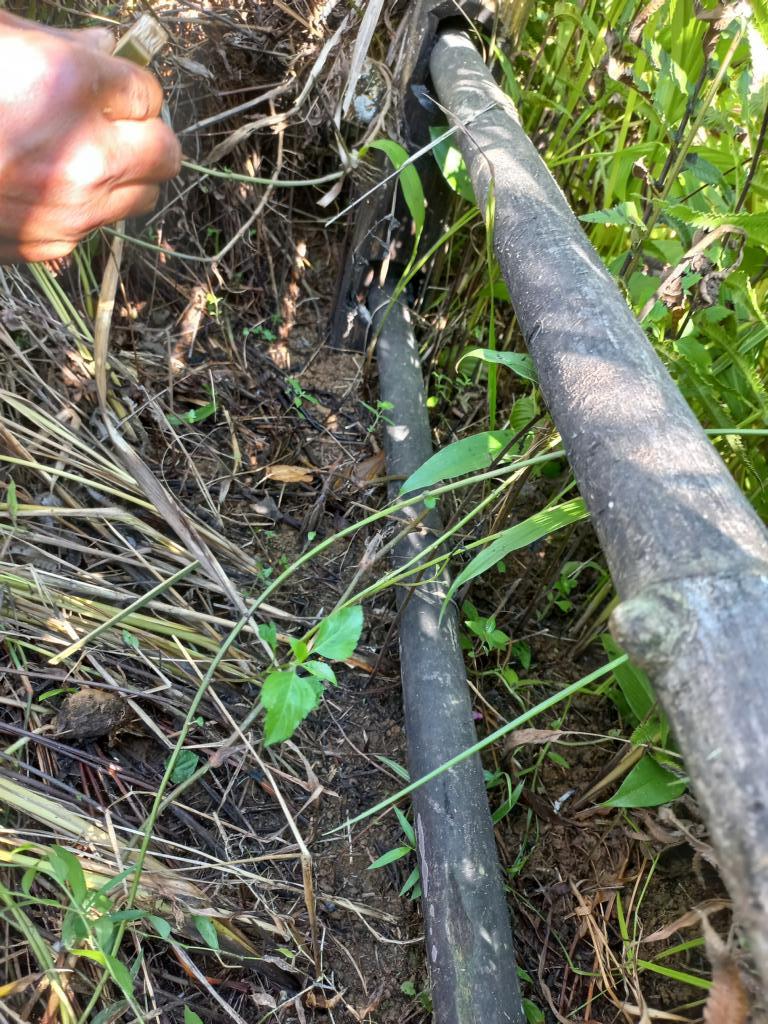
Design of conventional scissor-traps
Conventional scissor traps have been known for a long time on all continents. Although the sizes are often different, depending on the size of the target animals. A.R. Harding shows a typical design used in Arkansas for catching opossums and coons. Instead of a trigger stick, a string was used.
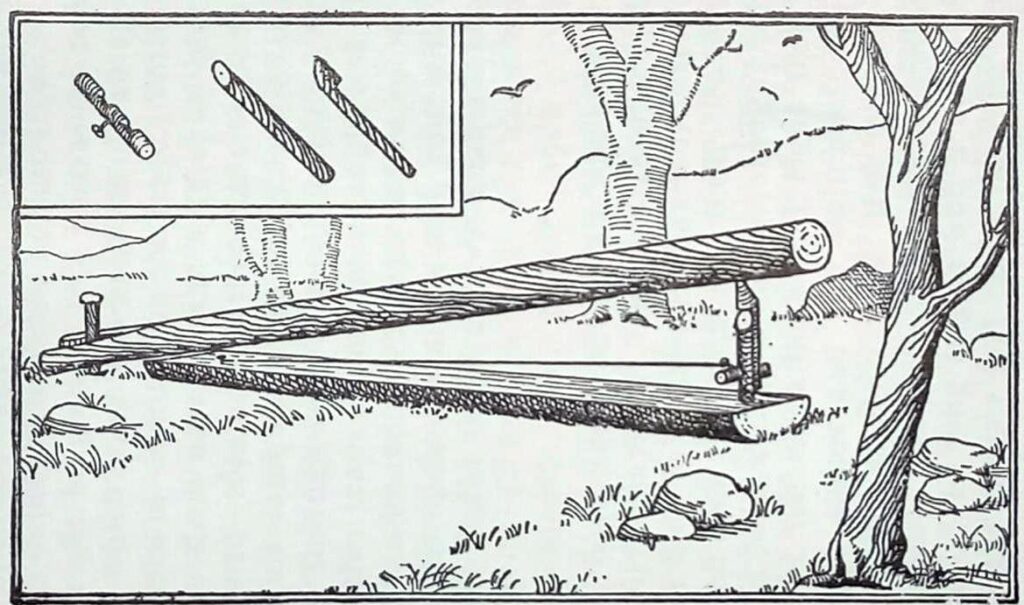
In Prussia, a similar design was used to catch martens and foxes. The figure-4 trigger is facing into the trap, and a massive, free-falling log kills the animal. On average, such a log trap catches about three target animals in wintertime.
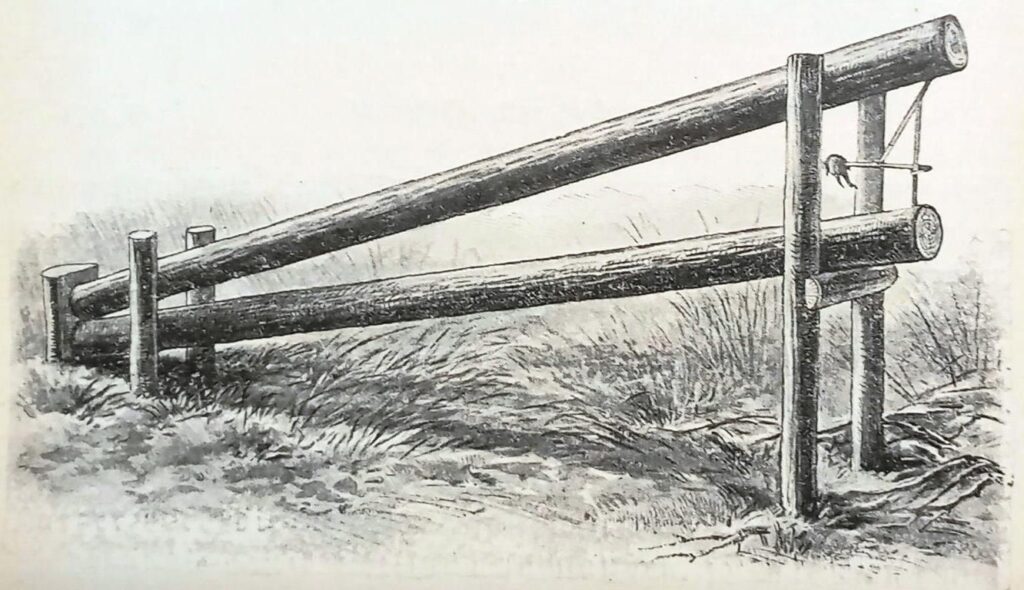
Design of the modified Vietnamese Bamboo scissor trap
The Thái Đen people in Northern Vietnam utilize a similar design to Harding or Regener. They developed it for their local conditions. These conditions are as follows: First, they have a unique building material on hand: bamboo. Second, they want to harvest rodents for food, not carnivores or omnivores for fur. And they need this food at least every other day all year round. Therefore, many easy and cheap-to-manufacture traps have to be set up.
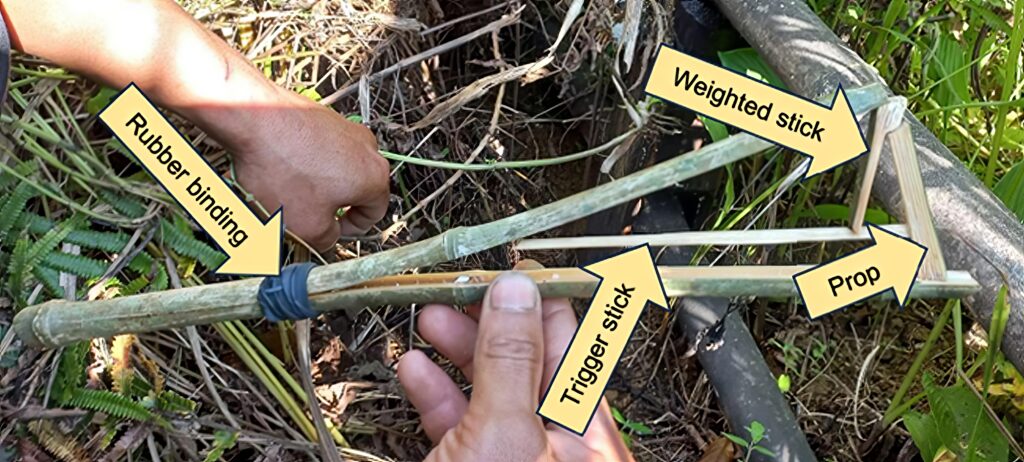
A thumb-sized, 50cm / 20’’ piece of bamboo is split nearly down to the node at the end of this stick. At a distance of about 1/3 of the stick length, a rubber binding restricts the further opening of the split and thereby acts as a spring. For this rubber binding, strips of bicycle tubes are used. The split bamboo is kept open by a type of Figure 4 trigger, as I described in the article about deadfall traps on this website.
The most crucial improvement over a conventional Figure 4 trigger is that the weighted stick pushes the trigger stick into the prop. All three sticks, therefore, can be kept very simple, and no ingenious carvings are necessary. However, the split bamboo stick’s upper half must be shortened by about 3cm / 1 ¼’’. This will ensure that the weighted stick will rotate towards the prop, not vice versa.
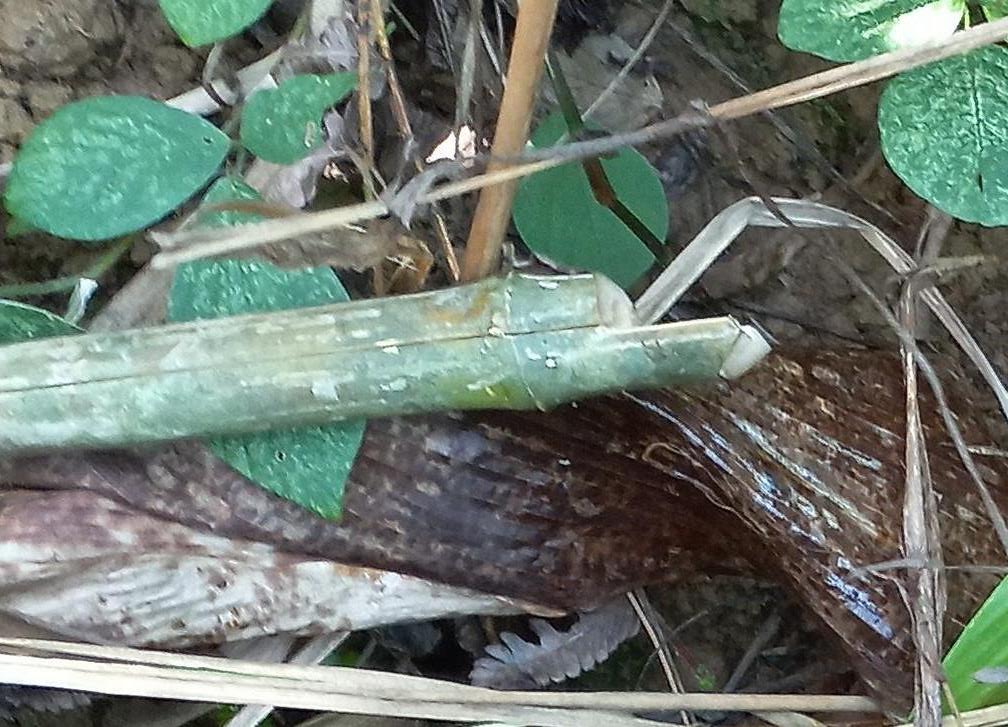
Scissor trap setting
As discussed earlier, the split bamboo stick will be fitted with the three sticks after finding a trapping location. Setting up the trigger is a bit of fiddly work, as the geometries are tight with a low margin of error.
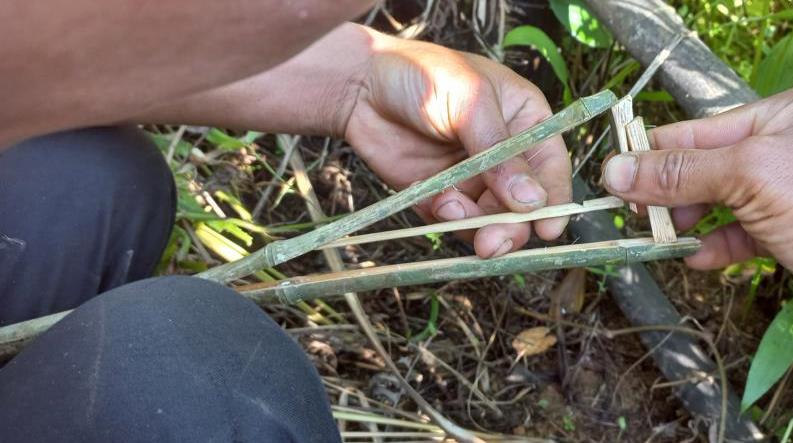
After setting up the trap, the part with the closed bamboo stick will be camouflaged with surrounding vegetation. Also, all sideways will be blocked. Bait is unnecessary, as the trap is set at a used run.
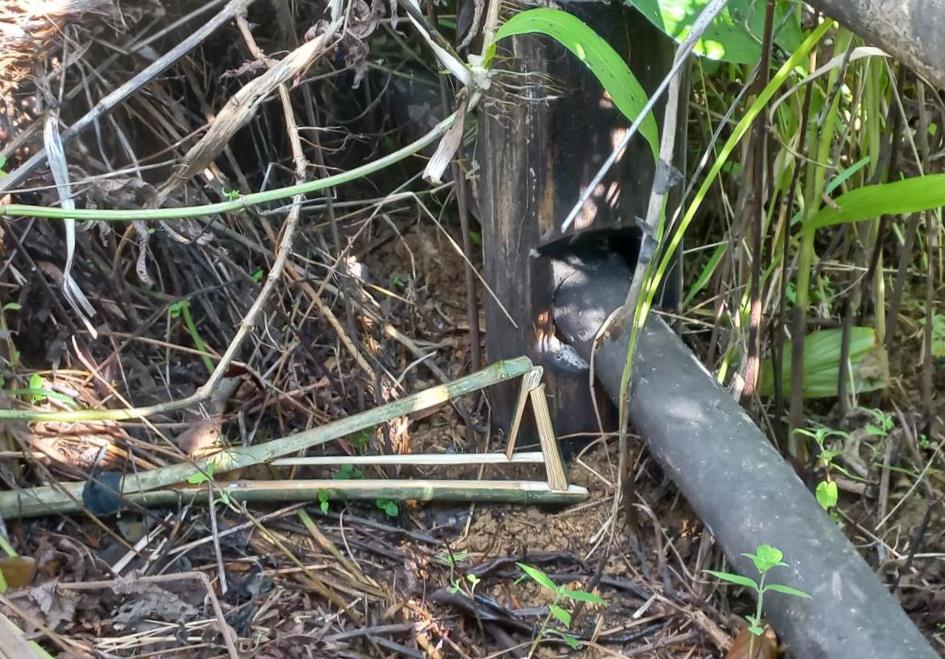
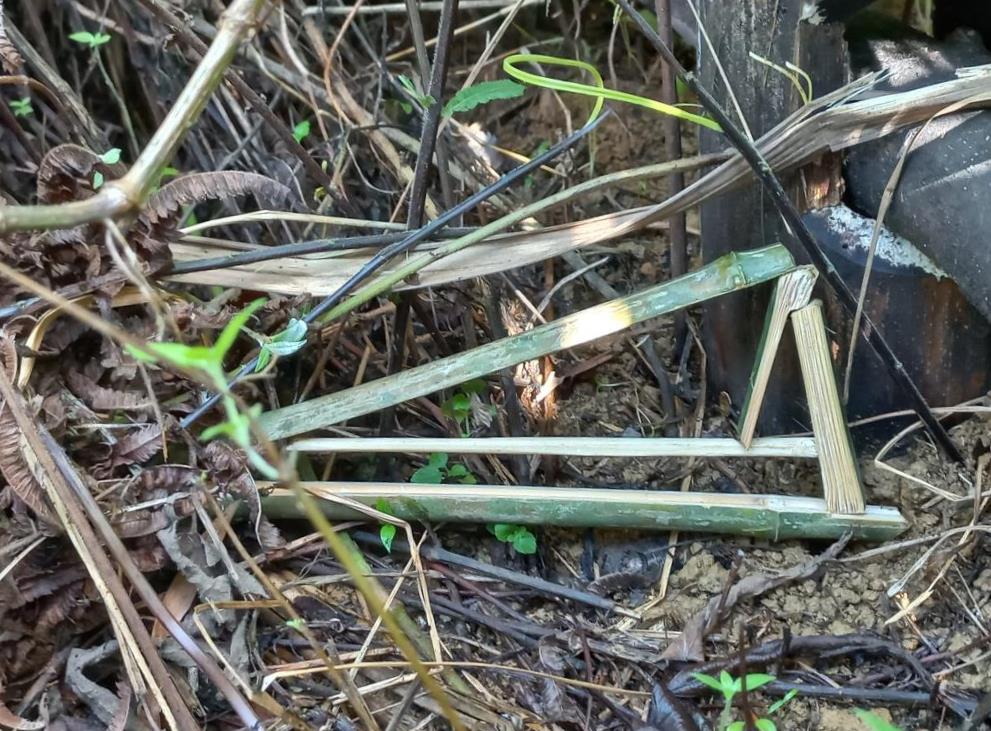
This final picture shows the trapping set-up before vegetation was moved back to the location. For the run next to the bamboo pole on the ground, enough space was left open for rats and mice to have protection from above, but still a clean ‘road’ to move around on.
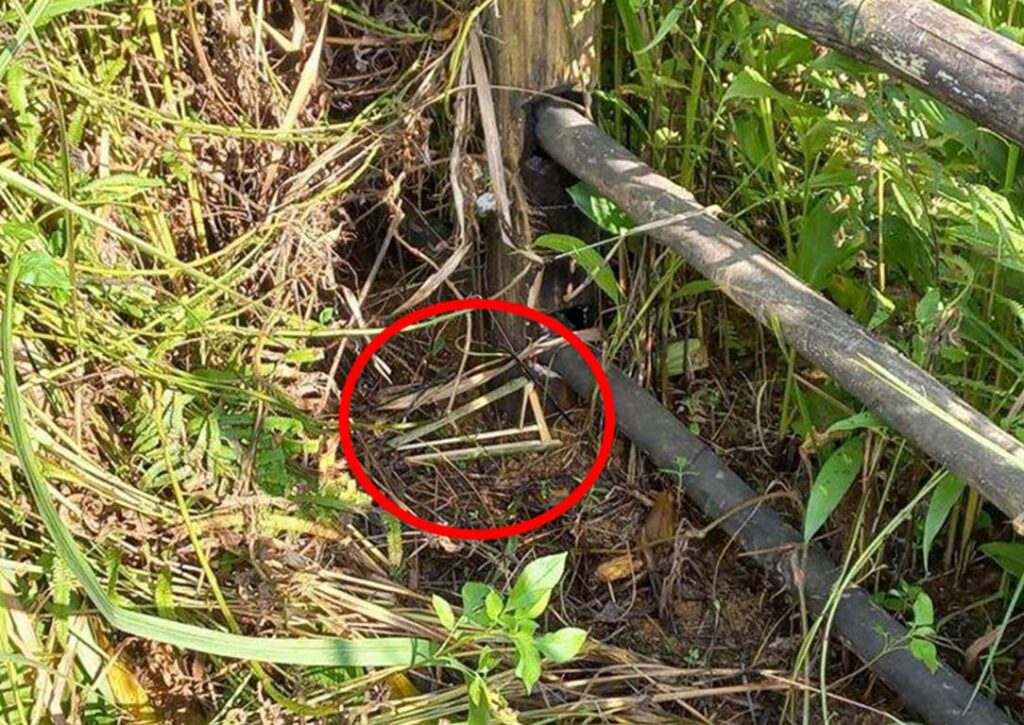
Lessons learned about Scissor Traps of the Thái Đen tribal people:
- Scissor traps made from bamboo are a fast and cheap way to catch all kinds of rats, mice, shrews, and voles.
- The traps are bamboo and need a strong rubber band for functioning.
- The split bamboo stick’s upper half must be shortened against the lower half.
- After setting up the trap, camouflaging the area against sight from above is necessary.
Further readings about Hunting of Rodents on this website:
Bow Traps of Thái Đen tribals in Vietnam
Deadfall Traps of Thái Đen tribals in Vietnam
Dormouse trapping in southern Slovenia
.



